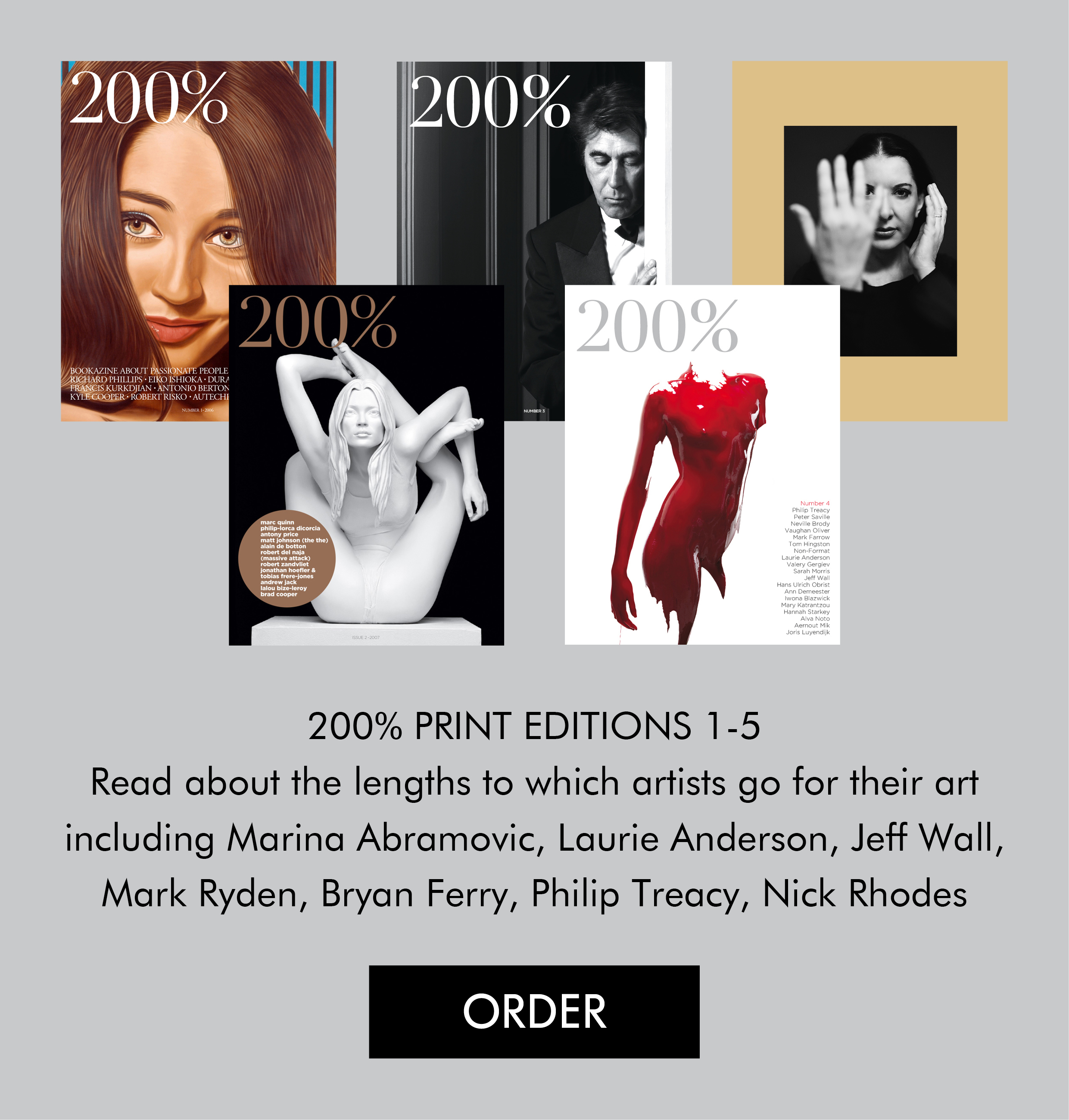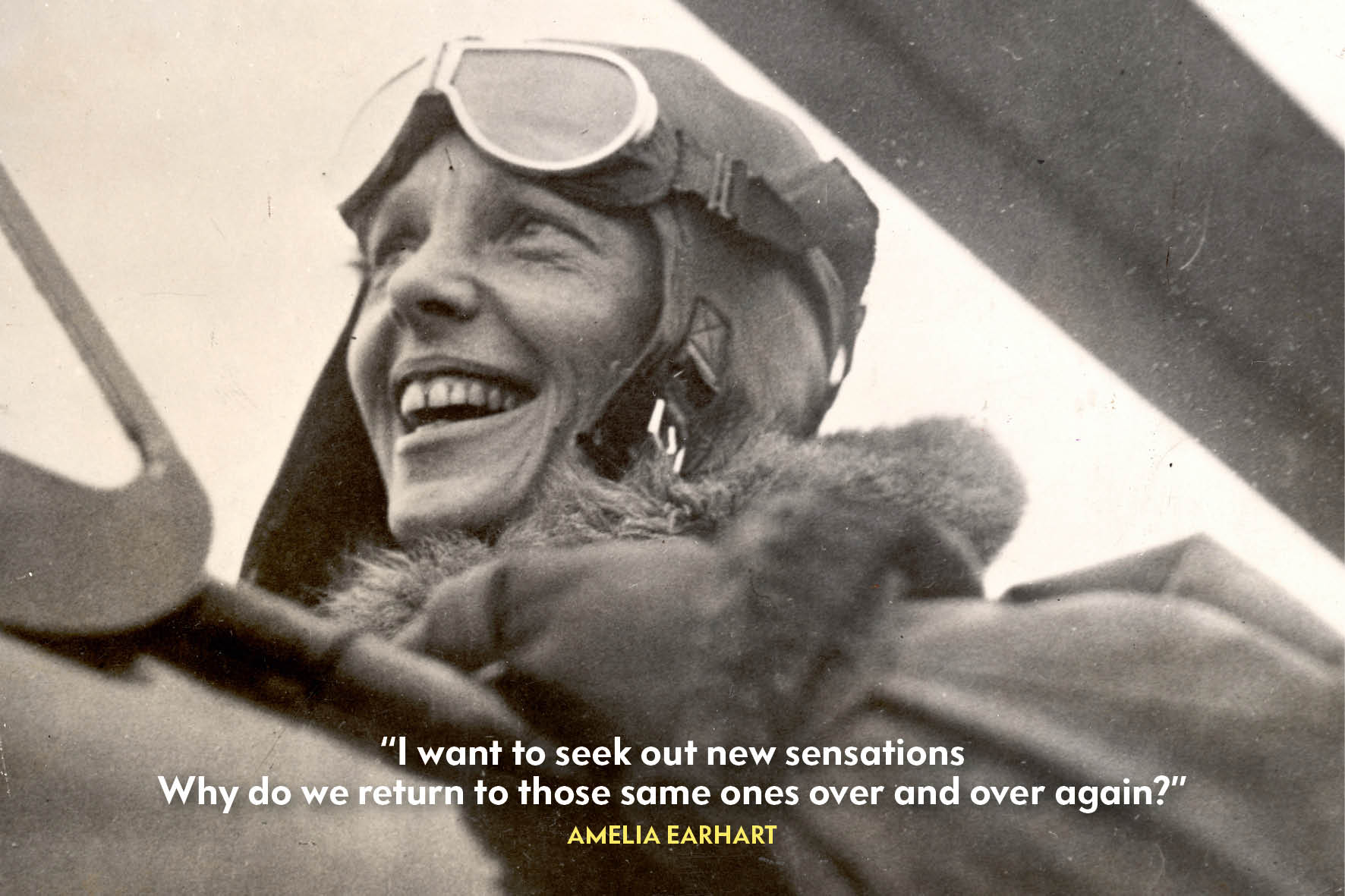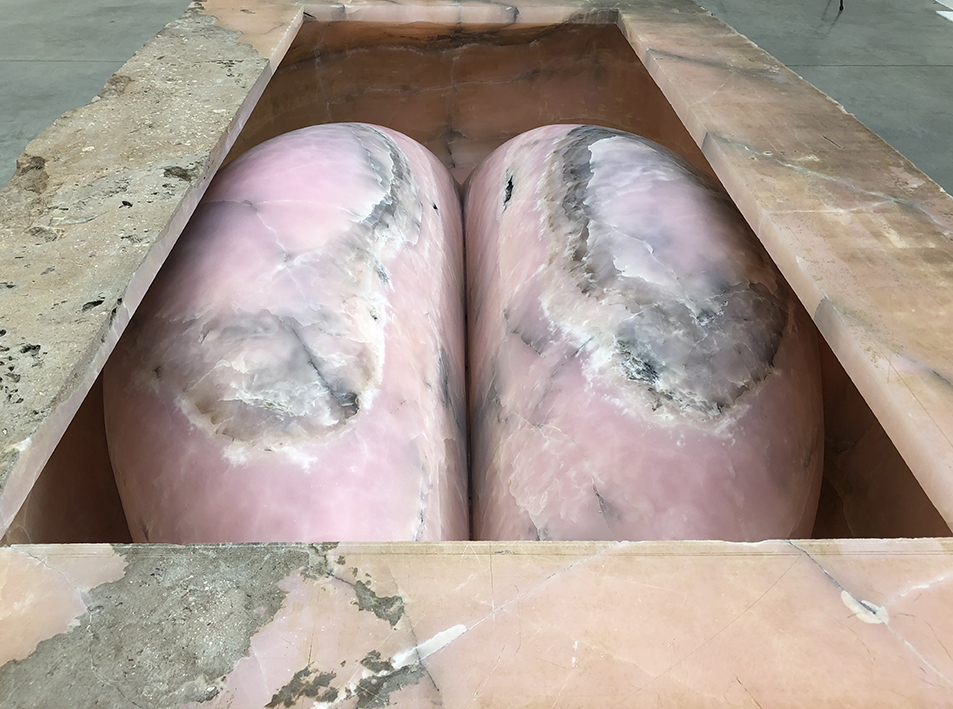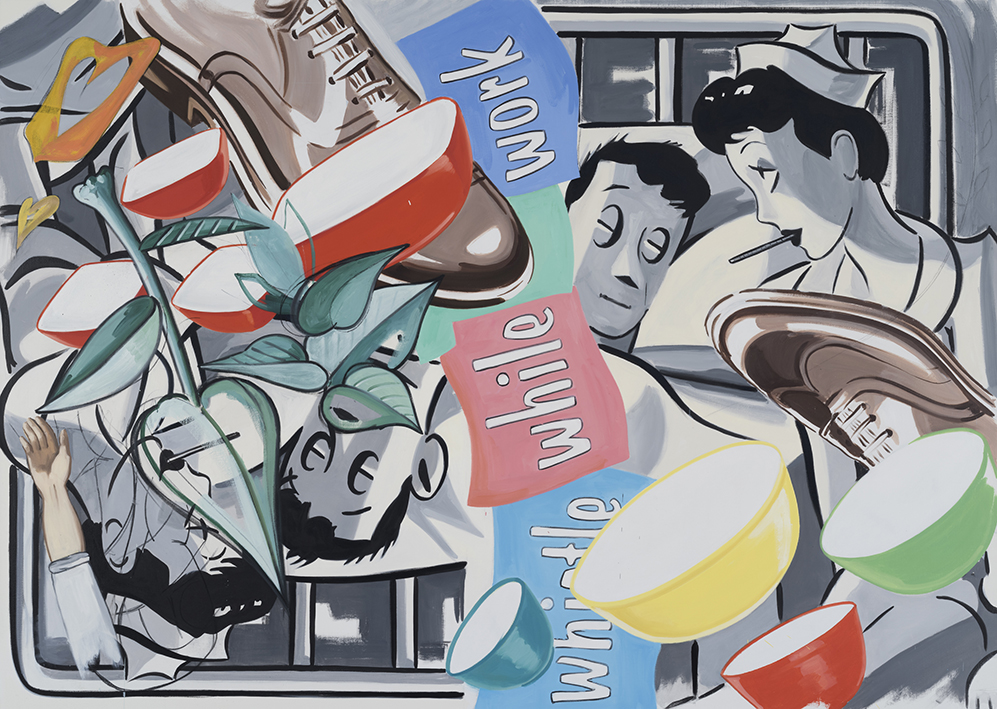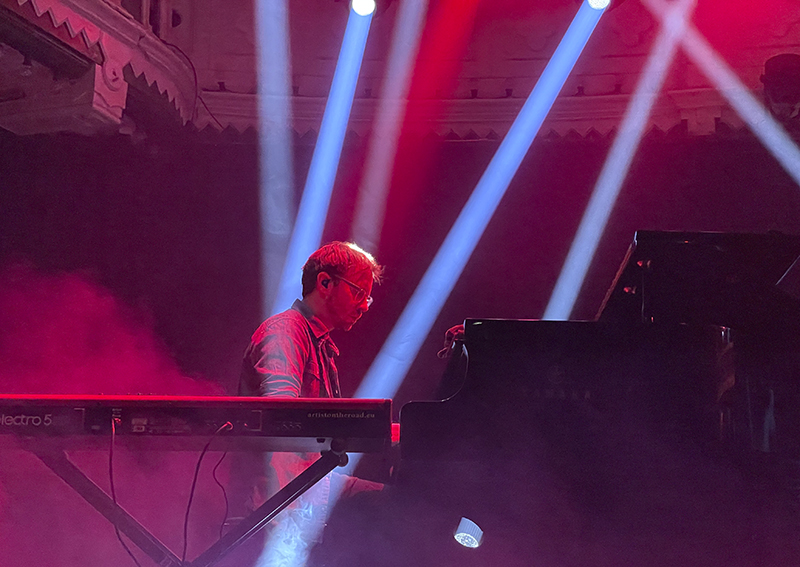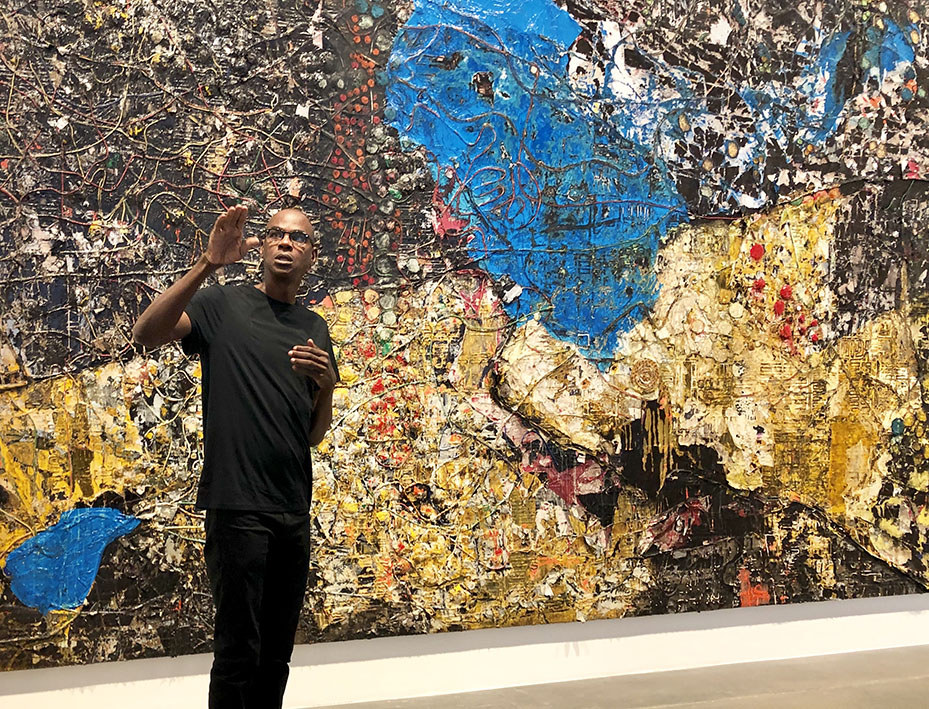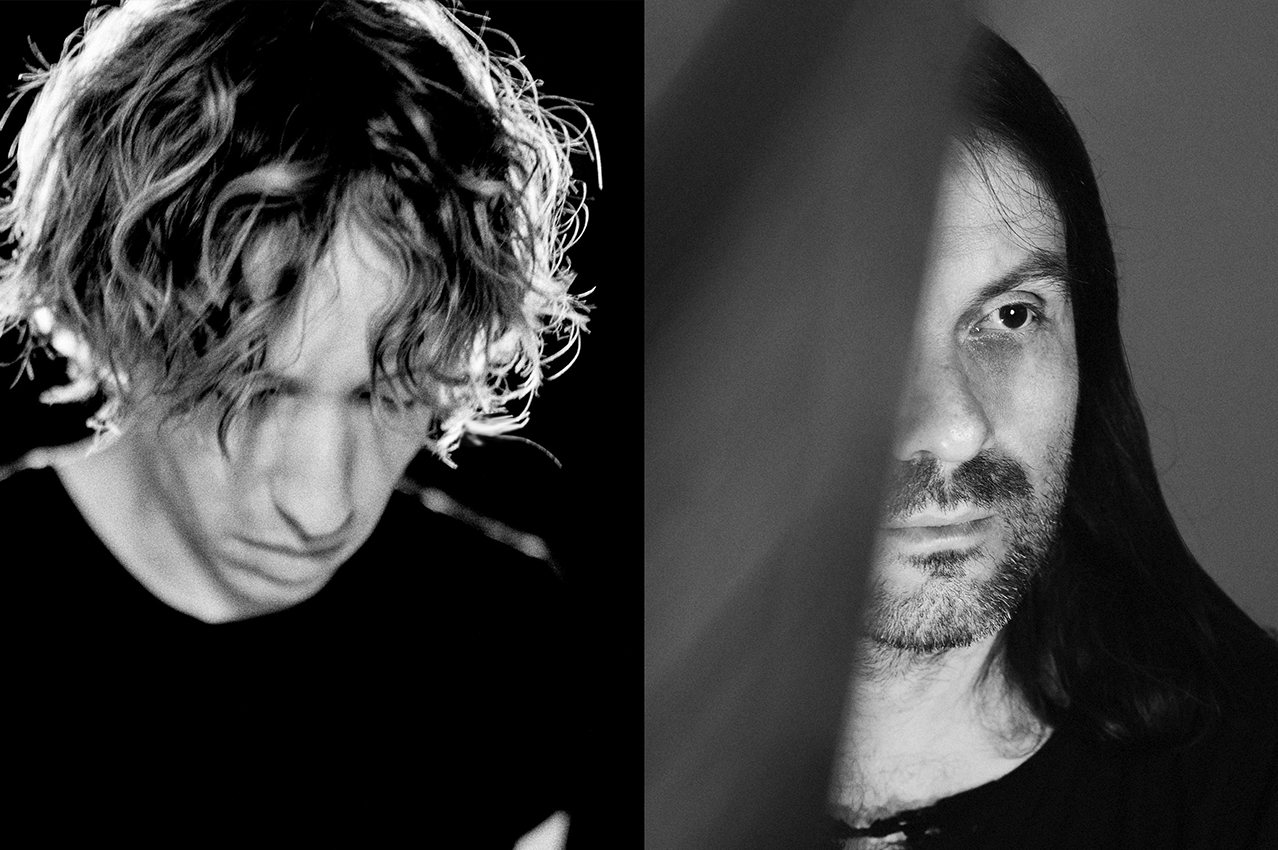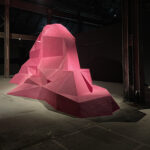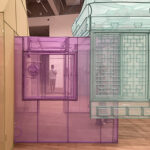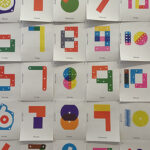 In one of our earlier posts, we were impressed by the high standard that Ordovas gallery set themselves with their inaugural exhibition, ‘Irrational Marks: Bacon and Rembrandt’, which included Rembrandt’s ‘Self Portrait with Beret’ loaned from the Musée Granet in Aix-en-Provence in France.
‘Calder In India’ is Ordovas’s latest show and equals, to be honest, even surpasses, the high standard the gallery has previously set. It took the founder of the gallery, Pilar Ordovas, ten years to organise this exhibition for which she reunited nine sculptures of the artist Alexander Calder that he created in a three week period that he spent in India during 1955. This collection of works is now shown for the first time in a Western gallery.
200% met with the Spanish born Ordovas at her gallery in Mayfair in London to discuss this unique and wonderful Calder exhibition, and how his sculptures helped her to discover and explore her own gallery space.
200%: How did the exhibition come about?
PO: Ten year ago, I met Mana Sarabhai, who was a little girl when her parents invited Alexander Calder and his wife to Ahmedabad in India: she told me first hand about his visit. She showed me some photographs and through the years I became close to her. Mana’s dream was seeing all these work together, which then became my dream and also my obsession. Initially, it was going to be my first show at the gallery, so it has been a long time this show has been in preparation. It’s been amazing as I have been able to put together all nine works, except one, Calder created in India.
200%: Do you know how Calder was able to balance the compositions of his sculptures, which were constructed with aluminium sheets?
PO: Calder’s background was engineering. What is absolutely extraordinary is that every single element is completely taken into account as each of them affects the balance and the movement of the sculpture. I think his genius was that he could determine composition and balance at once from his background and was able to make these free forms. It’s incredible that this large man with these big hands and tiny pliers created these incredibly delicate works. I think it was almost ingrained in him. I don’t think he had to work out the physics of it in order to start building it.
200%: Do you know whether Calder made sketches on paper of his works?
PO: Some of them were sketched. I think it was more free flow, with him just working away. They [compositions] were very much in his head. Some of the larger outdoor works, though, were sketched as they had to go to a welder for construction.
In one of our earlier posts, we were impressed by the high standard that Ordovas gallery set themselves with their inaugural exhibition, ‘Irrational Marks: Bacon and Rembrandt’, which included Rembrandt’s ‘Self Portrait with Beret’ loaned from the Musée Granet in Aix-en-Provence in France.
‘Calder In India’ is Ordovas’s latest show and equals, to be honest, even surpasses, the high standard the gallery has previously set. It took the founder of the gallery, Pilar Ordovas, ten years to organise this exhibition for which she reunited nine sculptures of the artist Alexander Calder that he created in a three week period that he spent in India during 1955. This collection of works is now shown for the first time in a Western gallery.
200% met with the Spanish born Ordovas at her gallery in Mayfair in London to discuss this unique and wonderful Calder exhibition, and how his sculptures helped her to discover and explore her own gallery space.
200%: How did the exhibition come about?
PO: Ten year ago, I met Mana Sarabhai, who was a little girl when her parents invited Alexander Calder and his wife to Ahmedabad in India: she told me first hand about his visit. She showed me some photographs and through the years I became close to her. Mana’s dream was seeing all these work together, which then became my dream and also my obsession. Initially, it was going to be my first show at the gallery, so it has been a long time this show has been in preparation. It’s been amazing as I have been able to put together all nine works, except one, Calder created in India.
200%: Do you know how Calder was able to balance the compositions of his sculptures, which were constructed with aluminium sheets?
PO: Calder’s background was engineering. What is absolutely extraordinary is that every single element is completely taken into account as each of them affects the balance and the movement of the sculpture. I think his genius was that he could determine composition and balance at once from his background and was able to make these free forms. It’s incredible that this large man with these big hands and tiny pliers created these incredibly delicate works. I think it was almost ingrained in him. I don’t think he had to work out the physics of it in order to start building it.
200%: Do you know whether Calder made sketches on paper of his works?
PO: Some of them were sketched. I think it was more free flow, with him just working away. They [compositions] were very much in his head. Some of the larger outdoor works, though, were sketched as they had to go to a welder for construction.
 200%: Calder’s sculptures are hanging from the ceiling so they can be affected by the motion from the air currents in the room and they also create shadows on the wall. Did you consult with a lighting designer for the works that are displayed in the basement section of your gallery?
PO: Part of the experience of Calder’s work is being able to see them in person. There is nothing that translates the beauty of the movement, the shadows and how they glide and slide, and how they transform the space, other than by physically seeing them. Although I worked really hard for the photography of the catalogue to try to convey an idea of the movement, I knew it would not be possible. I commissioned a film that is also on the website where you can watch them in movement. When I started the gallery I worked with a very good lighting specialist. For the Calder works I wanted to make that light more dramatic so we changed the lighting to help to create that effect.
200%: Marcel Duchamp has called Calder’s sculptures ‘mobiles’ – a French pun meaning both mobile and motive. How does Calder’s mobiles move you personally?
PO: To me it creates a completely magical space. Every day, coming into the gallery, I felt as though I had been transported elsewhere. As his works move, they have a life of their own, and they have transformed the gallery space so much. I felt in a different place. They really take over the space and, as soon as there is a little bit of breeze, they start moving around, which makes them come alive. To me they are extraordinary.
200%: So, they transform your gallery into a completely different space?
PO: Yes, they do. With each exhibition the space transforms into something different, but with Calder’s work I have discovered and experienced my gallery space and the structure like I have never have before. Some of the lines that felt ‘tricky’, or seemed difficult to install works, have now become the most beautiful areas of the gallery, as these works in movement provide a different light to everything around it. Suddenly, all the corners and lines of the gallery about which I was unsure have now become my favourite places. Calder’s work really helped me to discover and explore my own gallery space. Each morning when I enter the gallery, these works put a smile on my face as though I’ve entered Aladdin’s cave.
200%: Calder’s sculptures are hanging from the ceiling so they can be affected by the motion from the air currents in the room and they also create shadows on the wall. Did you consult with a lighting designer for the works that are displayed in the basement section of your gallery?
PO: Part of the experience of Calder’s work is being able to see them in person. There is nothing that translates the beauty of the movement, the shadows and how they glide and slide, and how they transform the space, other than by physically seeing them. Although I worked really hard for the photography of the catalogue to try to convey an idea of the movement, I knew it would not be possible. I commissioned a film that is also on the website where you can watch them in movement. When I started the gallery I worked with a very good lighting specialist. For the Calder works I wanted to make that light more dramatic so we changed the lighting to help to create that effect.
200%: Marcel Duchamp has called Calder’s sculptures ‘mobiles’ – a French pun meaning both mobile and motive. How does Calder’s mobiles move you personally?
PO: To me it creates a completely magical space. Every day, coming into the gallery, I felt as though I had been transported elsewhere. As his works move, they have a life of their own, and they have transformed the gallery space so much. I felt in a different place. They really take over the space and, as soon as there is a little bit of breeze, they start moving around, which makes them come alive. To me they are extraordinary.
200%: So, they transform your gallery into a completely different space?
PO: Yes, they do. With each exhibition the space transforms into something different, but with Calder’s work I have discovered and experienced my gallery space and the structure like I have never have before. Some of the lines that felt ‘tricky’, or seemed difficult to install works, have now become the most beautiful areas of the gallery, as these works in movement provide a different light to everything around it. Suddenly, all the corners and lines of the gallery about which I was unsure have now become my favourite places. Calder’s work really helped me to discover and explore my own gallery space. Each morning when I enter the gallery, these works put a smile on my face as though I’ve entered Aladdin’s cave.
![CalderBlue Dot-1 crop[1]](https://200-percent.com/wp-content/plugins/lazy-load/images/1x1.trans.gif) Interview written and conducted by Thierry Somers.
‘Calder in India’, Ordovas, until 3 August 2012.
Images: Calder in India installation view, photography by Mike Bruce. © 2012 Calder Foundation, New York/DACS, London 2012; Alexander Calder, Guava, 1955, photographed by Mike Bruce. © 2012 Calder Foundation, New York/DACS, London 2012; Alexander Calder, Untitled (Blue Dot), 1955, photographed by Mike Bruce. © 2012 Calder Foundation, New York/DACS, London 2012.
Forthcoming post: an interview with Pilar Ordovas on why she programs mainly historical exhibitions; her idea to program one-off projects with contemporary artists; her professional relationship with Lucian Freud; and why, in times of austerity, the prices for art works are still increasing.
Interview written and conducted by Thierry Somers.
‘Calder in India’, Ordovas, until 3 August 2012.
Images: Calder in India installation view, photography by Mike Bruce. © 2012 Calder Foundation, New York/DACS, London 2012; Alexander Calder, Guava, 1955, photographed by Mike Bruce. © 2012 Calder Foundation, New York/DACS, London 2012; Alexander Calder, Untitled (Blue Dot), 1955, photographed by Mike Bruce. © 2012 Calder Foundation, New York/DACS, London 2012.
Forthcoming post: an interview with Pilar Ordovas on why she programs mainly historical exhibitions; her idea to program one-off projects with contemporary artists; her professional relationship with Lucian Freud; and why, in times of austerity, the prices for art works are still increasing.

